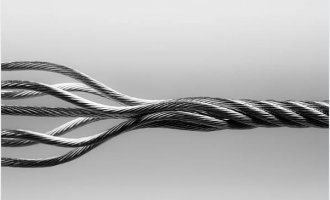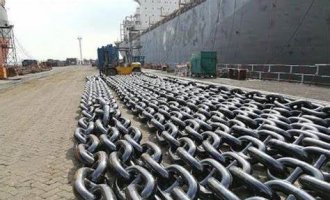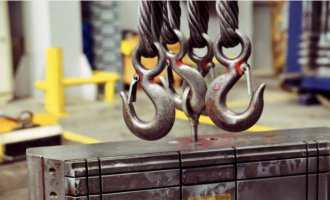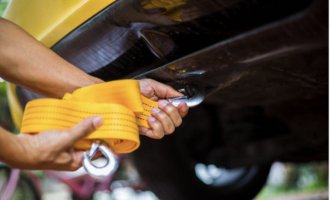1410, PARKSON, 44-60 ZHONGSHAN ROAD, QINGDAO, CHINA
Our effort in pursuing the highest level of technology, products’ quality and customers' satisfaction is never ending.

Ratchet tie down straps are a must-have for safely securing cargo in your ute, trailer, or truck. Whether you’re moving house or transporting gear to a job site, using them properly ensures your load stays tight and damage-free. Here’s how to choose the right strap—and use it the right way.

Wire rope is a complex mechanical device that has many moving parts all working in tandem to help support and move an object or load. In the lifting and rigging industries, wire rope is attached to a crane or hoist and fitted with swivels, shackles or hooks to attach to a load and move it in a controlled matter. It can also be used to lift and lower elevators, or as a means of support for suspension bridges or towers.

Anchor chains are heavy-duty components of vessels' anchorage systems that connect the anchor to the ship and ensure the boat stays in one place. The bad weather, wind, or any other external force fails to move the vessel from its position.

Anchors are nautical equipment designed to restrict the movement of vessels or structures in water. They function through their weight, by clamping onto the seabed, or by combining both techniques. Anchors also serve as drogues during storms, providing stabilizing drag that prevents bow slamming and flooding from green water. Modern anchors primarily derive from three standard designs: Fluked, Admiralty, and Stockless anchors, each with their own advantages and limitations. Typically constructed from corrosion-resistant metals, anchors can also be made from fiber-reinforced composites or polymers, which offer high strength-to-weight ratios but at higher manufacturing costs. Anchors are utilized in applications ranging from traditional vessels to modern semi-submersible structures like oil rigs, and can be deployed either temporarily or permanently fixed.

If you are completely confused about which rope types to use for which job, in this article, we'll discuss the different types of ropes and their uses from those that are readily available. Ropes can be classified by their material source (natural or synthetic) and by their construction method. Let's explore both categories to help you make the best choice for your specific needs.

Snap hooks are durable connection solutions for rigging and anchoring in a variety of non-critical environments. They are ideal for securing chain, wire, rope, and slings, but they are not intended for lifting or fall arrest. Use these rigging fasteners in applications like fencing, marine settings, and farming

An overview of various hooks used in industrial rigging, including eye hooks, clevis hooks, swivel hooks, sorting hooks, foundry hooks, J-hooks, grab hooks, and drum/barrel hooks. This guide details the design features, appropriate applications, and safety limitations of each hook type, helping users select the right equipment based on load weight, material type, and lifting angle to ensure safe and efficient rigging operations.

Discover everything you need to know about turnbuckles in this comprehensive guide. From basic components and working principles to various types and materials, we break down this essential rigging device used across industries. Whether you're building a simple fence or working on complex construction projects, learn how to select the right turnbuckle for your specific application and ensure safety and efficiency in all your tensioning needs.

Webbing slings are flexible straps made from high-strength synthetic materials like polyester, primarily used for lifting and securing heavy loads across construction, manufacturing, logistics, and shipping industries. The article outlines three main types: flat webbing slings for general lifting, round slings offering increased flexibility, and endless slings for irregular loads. Safe usage involves five key steps: inspection and maintenance before use, proper load calculation and sling selection, correct rigging and accessory use, careful lifting and handling with team coordination, and continuous monitoring during operation. Regular inspection and proper storage are essential for maintaining the slings' integrity and ensuring safe lifting operations.